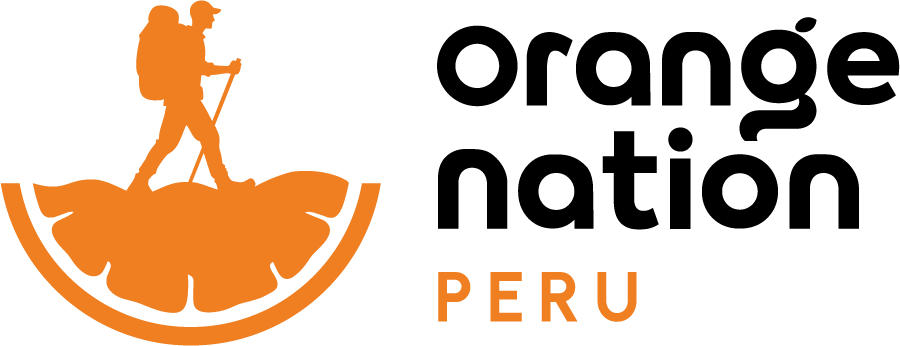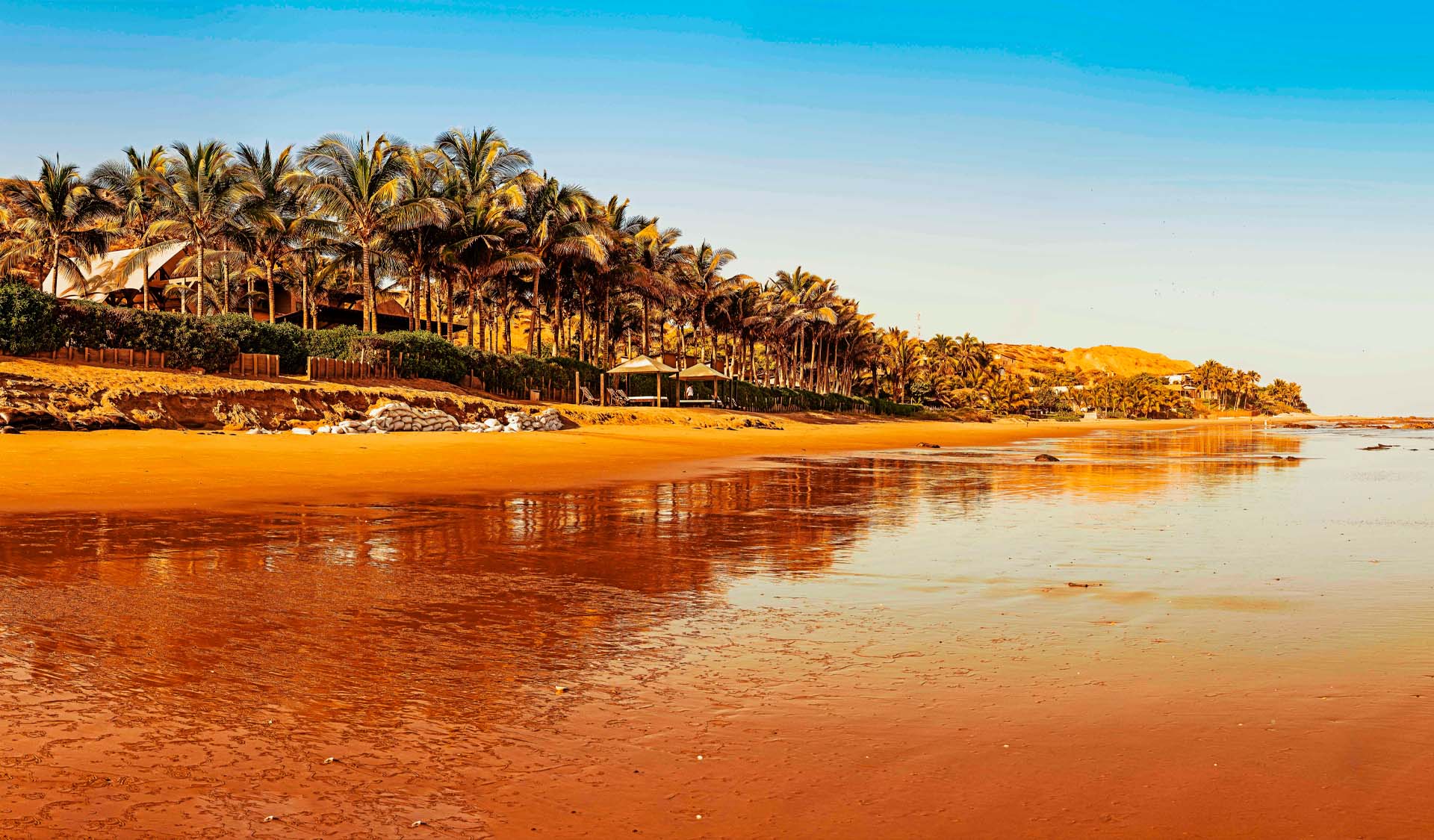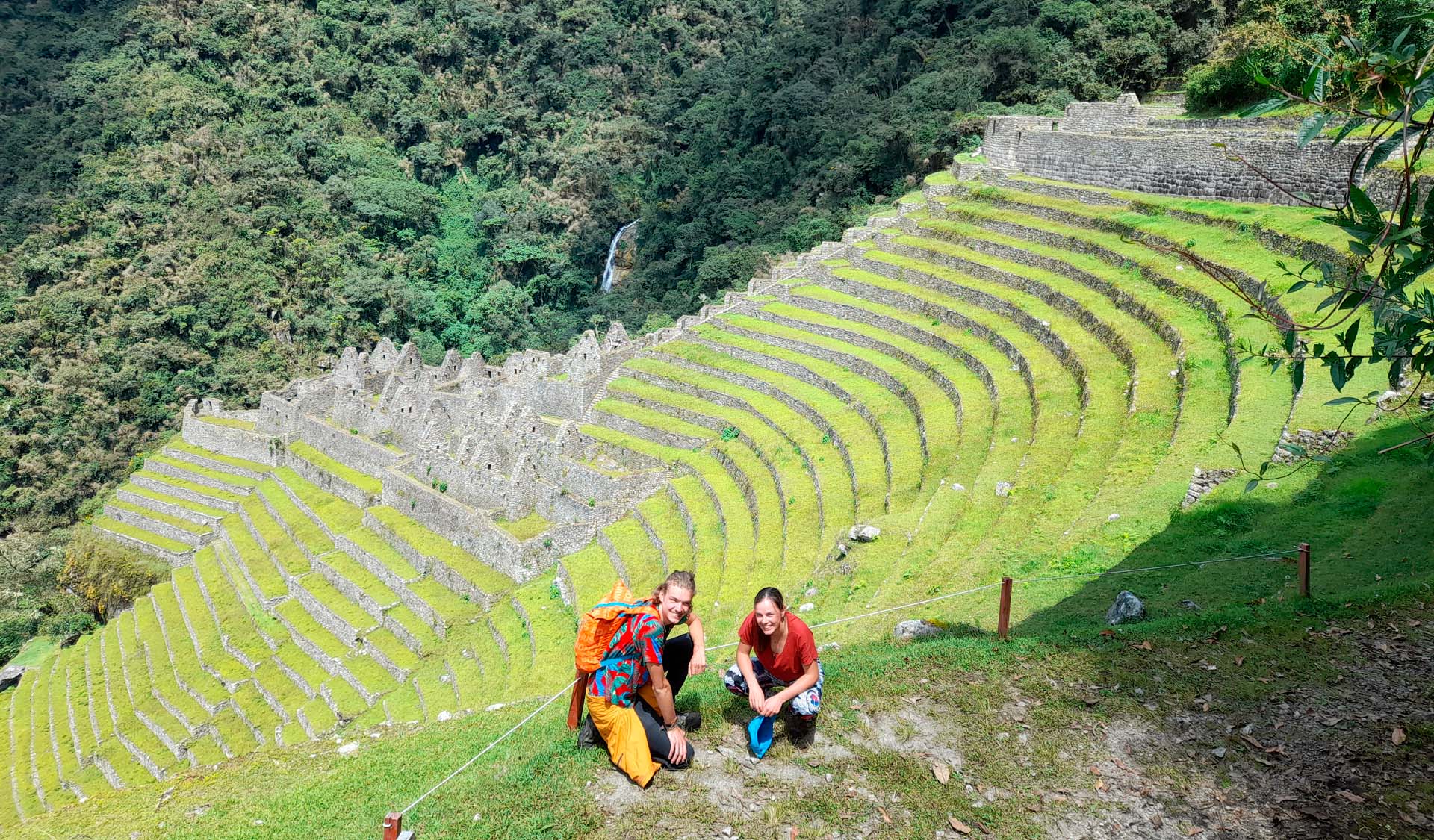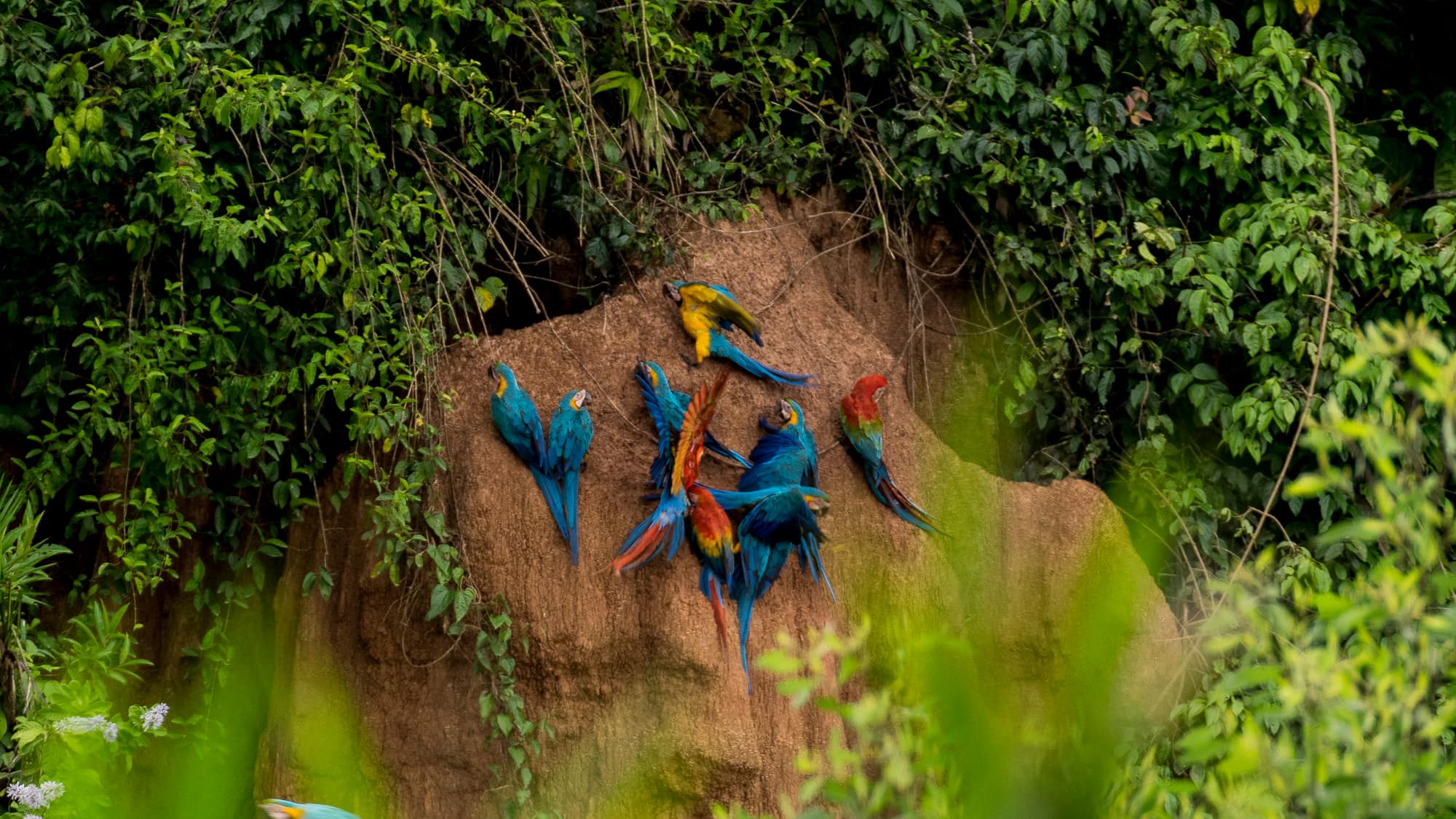Colca Canyon in Arequipa: Your Ultimate Travel Guide
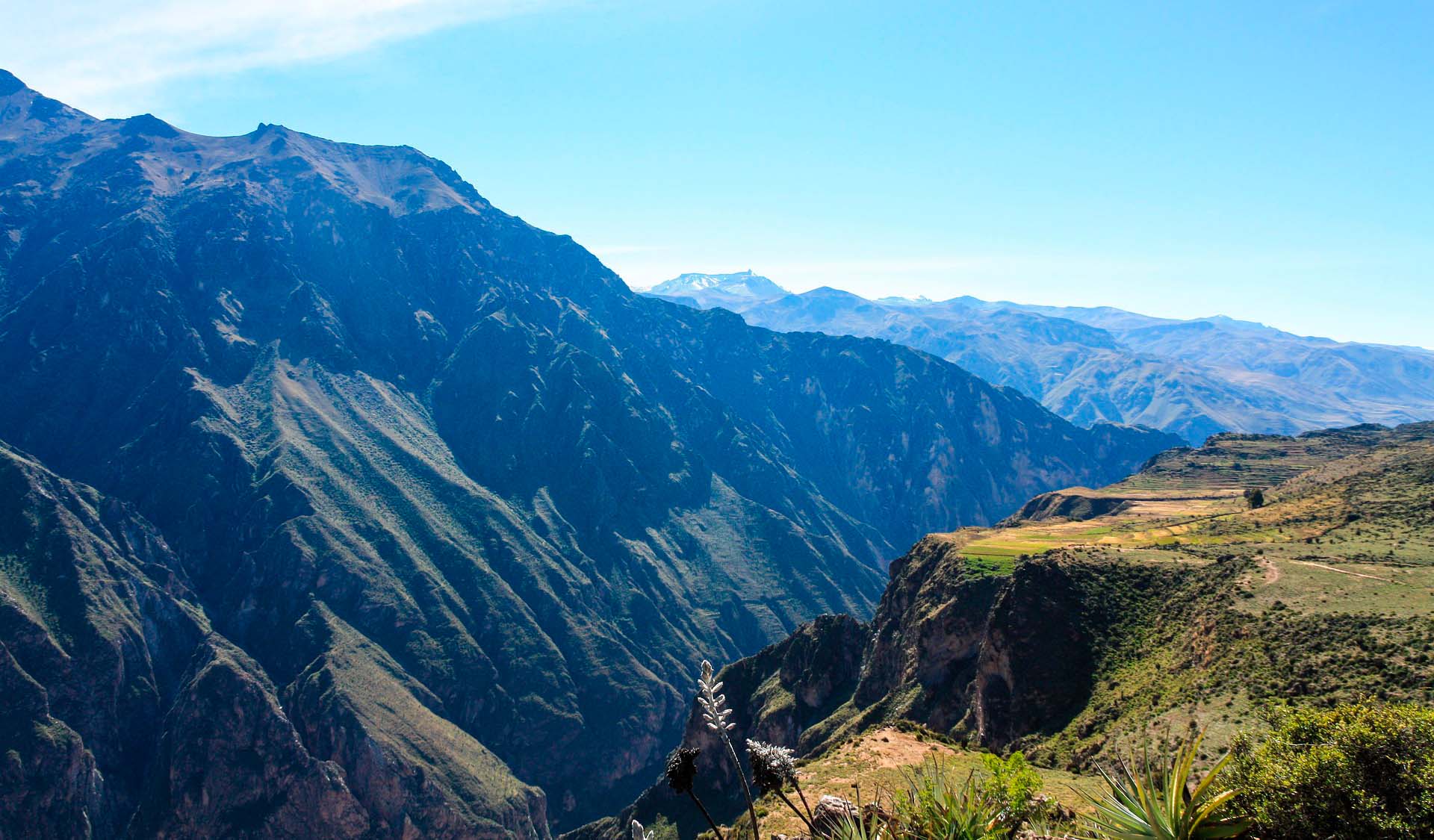
The Colca Canyon is the one of the worlds’ deepest canyons. It´s the third most visited tourist destination in Peru, welcoming thousands of visitors very year. Located just 160km/99miles from the picturesque white city of Arequipa, the canyons have a depth of 1000-2000m with the Colca River running through it. The Cullaqua and Cabana cultures still call this home and maintain a traditional way of life. Their traditions and customs are rooted in their ancient Inca heritage.
Colca Canyon is home to multiple bird species like the impressive Andean Condor (vultur gryphus), giant hummingbirds, Andean geese, Chilean flamingoes and mountain caracara. Other unique fauna to look forward to include the vizcacha (a rare rodent that resembles a rabbit), zorrina (Andean skunk), deer, fox and last but certainly not least is the National animal of Peru, the gorgeous vicuña.
Other attractions include the many hot springs dotted around the valley. Also, venture to the caves of Mollepunko or hike up to the extinct volcano of Hualca Hualca. Another great outing to consider is to join one of the many cultural festivals in the area, like the popular Wititi festival in Chivay. Finally, embark on any the variety of treks on offer to the canyon floor and the famous Mirador Cruz De Condor, where you can watch the largest living birds of Prey, the Andean Condors taking flight. These birds have an astounding wingspan of 3.2m and weigh around 15kg/33lbs.
Below we delve deeper into how, when and why you can and should visit the Colca Canyons. Don´t miss the opportunity to visit these remarkably diverse canyons, with their own unique perspective on the stunning vistas Peru has on offer. You’ll hike from the terraced farmlands on the rim of the canyon wall, all the way down to a sparkling oasis at its heart as condors soar above.
How long does it take to visit the Colca Canyon?
It really depends on how much time you have and how you’d like to explore the canyon. Most travelers choose the two-day Colca Canyon hike – one night in the oasis – which involves an early morning 4 hour drive from Arequipa. Alternatively, the three day/two night trek gives you a chance to explore more of the canyon’s epic scenery.
When is the best time to do the Colca Canyon trek?
April and May are the best months to visit the Colca Canyon as the valley turns green following the seasonal rains but the mountains are still capped with snow. That said, the Colca Canyon weather is generally warm and dry all year long, except for January through March when it rains almost every day. Because of the elevation, nights can be cold, especially if it’s been cloudy during the day.
Low pollution levels in the desert region mean clear night skies. If you can time your trip, visit during the new moon in April or May. The views at night are majestic!
Where is it located?
The canyon is located in the Colca Valley, Caylloma province (160 kilometers from the city of Arequipa).
The altitude varies from 2,900 meters to 4,500 meters above sea level.
How fit do I need to be?
Overall, the Colca Canyon trek is challenging, whichever path you choose. Even though the hike down may be easy, you still need to hike your way out of the canyon and, with Sangalle sitting at 2,100 metres of elevation and Cabanaconde at 3,300 metres, you’re facing the effects of altitude, too.
Another thing to consider is that it’s a high desert region where the sun is pretty intense, and there are not many trees to offer shade. Moreover, the paths are mostly dusty with small, loose rocks, which is physically demanding.
You don’t need to be super fit to do the Colca Canyon hike. But it’s definitely not for a first-timer or anyone with mobility issues. Since there’s no place to spend the nights other than in Cabanaconde or in the villages within the canyon, once you start your hike, there’s no stopping. So, good cardio, strong legs, and a sense of determination are a must.
Small town around the Canyon
Chivay (3 600m/11 800ft)
This is a cute tourists hub that links the two different entrances into the Colca Canyon. It has a wide variety of lodging options, from more budget friendly options to more trendy alternatives. In the center is a town plaza with a lively market and an extensive selection of handicraft shops. Also, a short walking distance is the La Calera hotsprings. A great town to spend the night to enjoy the views and rest from a long day of hiking.
Yanque (3 420m/11 221ft)
Yanque is a quaint town with great views of the River and the nearby volcanoes of Sabancaya and Misti. Children are usually gathered in the square to perform folkloric dances for tourists in the center. It is also known for the best looking church in the region, the Immaculate Conception Church. The church is a classic baroque mestizo style.
Cabanaconde (3 296m/10 814ft)
The village of Cabanaconde is the point where a number of treks begin. From here you get to pass a number of lookout points such as Cejana, San Miguel and Achachiwa. A steep 2-3 hour descent takes you to the small oasis town of Sangalle. Cabanaconde is the closest town to Mirador Cruz Del Condor, the lookout point that’s famed for the condors that soar above it.
Hotsprings
Whether you’re spending the night in Chivay or have just completed a trek, consider relaxing in one of the numerous hot springs and geysers throughout Colca Canyon. Locals believe the pools have curative properties, especially for rheumatism and arthritis.
- La Calera hot springs are 2 mi (3.5 km) from Chivay. Choose from indoor and outdoor pools of differing temperatures with views to the mountain landscape. Calera can sometimes have a bit of a festive atmosphere in the afternoons, so go early for a more tranquil experience.
- Chacapi hot springs are 1 mi (1.5 km) from the plaza in Yanque and a pleasant setting for a reinvigorating soak in thermal waters after a day of exploring. The water temperature at the pools can reach up to 122°F (50°C).
- Guests at Colca Lodge have unlimited access to the hotel’s amazing thermal pools.
Frequently asked questions
1.- Will I see Condors?
The Colca canyon is the “best place” in South America to see the Andean Condor. During a Colca Canyon tour, most tours stop at Cruz Del Condor in the morning, to have the best chances of seeing these magnificent birds. Remember that there is no guarantee that you will see condors, but in most cases it is possible to observe them at close range. 🙂
2.- Can I continue by land from Colca valley to Puno on Lake Titicaca?
Yes, this is possible! And it is the most recommended itinerary to save time, because you do not have to return to Arequipa city.
There are many tours and excursions that have a package deal that includes Colca Canyon and Lake Titicaca in Puno. The tour usually begin in the city of Arequipa, before continuing on to the Colca and finally stopping in Puno. Sam Corporations has the most comprehensive tour package. Click the following link for information: Best Peru tour package.

3.- Can I start the Colca canyon 2 days tour from Puno?
YES! This service that can be offered on Colca Canyon a private tours! To ensure this departure is possible, you need to contact your tour operator to organize transportation from Puno to the trailhead of the tour. This might incur extra costs, so its imperative to go through the the details before booking.
4.- I do not want to take all of my luggage on the tour. Where can I leave my luggage?
For excursion to Colca canyon with return to Arequipa city, hotels and hostels will normally store luggage in their safety deposit for free until you return.
5.- I am afraid about altitude sickness: Is it a problem?
Altitude sickness can catch many travelers and we recommend spending at least one night in Arequipa city in order to acclimatize to the altitude. If you have just spent a few days in Puno, then you should be fine. Puno is at a much higher altitude than Arequipa and the Colca Canyon. Elevation varies considerably in the canyon. On the hike down, you drop a significant amount of altitude, however, that simply means you have to gain all that altitude again on the way back.
To put things in perspective, here is a few examples of how the elevations differs.
- The greatest depth is in the region of Huambo where the river is at an elevation of just (1,066m/3 497ft)
- From Arequipa city (2 335m/ 7 661ft) to the Patapampa Pass (15 830ft/ 4 825m) is almost 2500m in elevation gain by car.
- Patapampa Pass (15 830ft/ 4 825m) to Chivay (3 600m/ 12 000ft) / Cabanaconde (3 280m/ 10 760ft)
In conclusion, the Colca Canyon does present challenges with the altitude. You descend as much as you have to ascend again. So we recommend acclimating and taking the right precautions should altitude sickness set in.
Drinking Coca Tea the first day of arrive in Arequipa can very helpful! Also it is important to avoid alcoholic drinks and try to drink a lot of water.
Double check that your Colca canyon tour operator provides “oxygen” in case its need.

6.- Family trips to Colca Canyon: Can I travel with kids?
YES! The Colca Valley is ideal for families traveling with small children and teenagers.
Most travelers focus on hiking or to observe the condors on the canyon walls. However, children can enjoy some exploring and the traditional villas along the short walks. They can also bath in the hot springs pools, feed the animals or participate in the organic farming practiced in the region.
Activities such as feeding baby alpacas, horseback riding, hiking, artisanal textiles, games etc. are some of the many activities offered to family in the Colca Valley.
